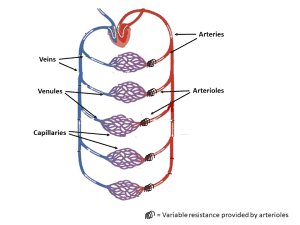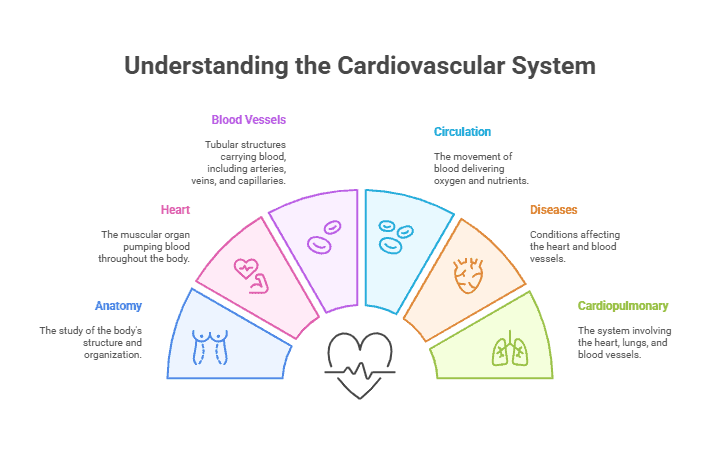The cardiovascular system is a complex network of organs and vessels responsible for circulating blood throughout the
body. It plays a crucial role in delivering oxygen and nutrients to cells, removing waste products, and maintaining
homeostasis. Understanding the anatomy of the cardiovascular system is essential for grasping how this intricate system functions.
The Heart
The heart is the central organ of the cardiovascular system. It is a muscular pump that contracts and relaxes to push blood through the blood vessels. The heart has four chambers: the right atrium, right ventricle, left atrium, and left ventricle. The atria receive blood, while the ventricles pump blood out of the heart.

Blood Vessels
Blood vessels are the channels through which blood flows in the cardiovascular system. There are three main types of blood vessels: arteries, veins, and capillaries. Arteries carry oxygen-rich blood away from the heart, while veins
return oxygen-poor blood back to the heart. Capillaries are tiny vessels where gas exchange and nutrient exchange occur.

Cardiac Cycle
The cardiac cycle refers to the sequence of events that occur during one heartbeat. It involves the contraction and relaxation of the heart chambers to pump blood effectively. The cardiac cycle includes diastole (relaxation) and systole (contraction) phases that coordinate to maintain blood flow.

Circulation
There are two main circulatory pathways in the cardiovascular system: pulmonary circulation and systemic circulation.
Pulmonary circulation carries blood between the heart and lungs, while systemic circulation transports blood to the rest of the body. This dual circulation system ensures that oxygenated blood is distributed efficiently.
Summary
In summary, the cardiovascular system comprises the heart, blood vessels, and circulatory pathways that work together to transport blood throughout the body. Understanding the anatomy of the cardiovascular system is crucial for
comprehending how blood is pumped, distributed, and exchanged in the body. By learning about the heart, blood vessels, cardiac cycle, and circulation, you can gain a comprehensive overview of this essential system.
Key Takeaways:
- The cardiovascular system is made up of the heart, blood vessels, and blood.
- The heart is a muscular organ that pumps blood throughout the body.
- Blood vessels include arteries, veins, and capillaries, which carry blood to and from the heart.
- Blood is made up of red blood cells, white blood cells, platelets, and plasma.
- The cardiovascular system plays a crucial role in delivering oxygen and nutrients to tissues and removing waste
products. - Understanding the anatomy of the cardiovascular system is essential for understanding how it functions and how diseases can affect it.
Key Terms:
- Cardiovascular System: The system of the body comprising the heart and blood vessels, responsible for circulating blood throughout the body.
- Anatomy: The study of the structure and organization of the body and its parts.
- Heart: The muscular organ that pumps blood throughout the body.
- Blood vessels: Tubular structures that carry blood throughout the body, including arteries, veins, and capillaries.
- Circulation: The movement of blood through the cardiovascular system, delivering oxygen and nutrients to cells and removing waste products.
- Cardiovascular diseases: Conditions that affect the heart and blood vessels, such as heart disease, stroke, and high blood pressure.
- Cardiopulmonary system: The system that includes the heart, lungs, and blood vessels, responsible for oxygenating blood and removing carbon dioxide.
